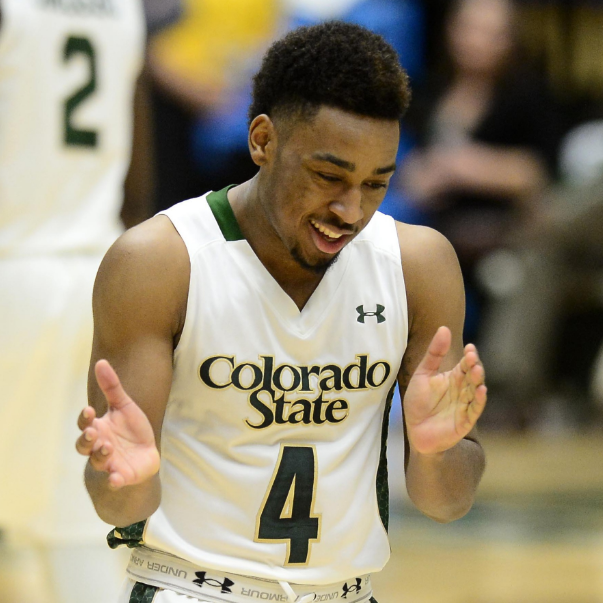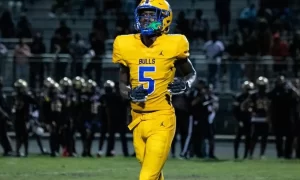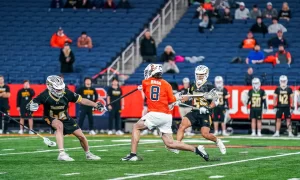The term “journeyman” is usually used to describe professional athletes who bounce around their respective league and play for several different teams. Sports fans usually don’t use the moniker when talking about collegiate athletes, who normally stay with one program for their entire amateur career.
But this winter, Syracuse will welcome a basketball player who certainly fits the bill. John Gillon, a graduate transfer from Colorado State, will make Central New York his third NCAA home. The 22-year-old spent two seasons with the Rams after beginning his career at Arkansas Little-Rock (a Sun Belt program that proved it can compete with the big boys when it knocked off Purdue in the first round of the 2016 NCAA Tournament).
Last year, Gillon averaged 13.2 points and 3.9 assists in 31.7 minutes per game — a huge increase from 2014-15, when he saw just 20.8 minutes of action a contest. He connected on just 38.4 percent of his field goal attempts, but that figure undersells his efficiency. More than half of Gillon’s shots came from behind the arc, and his true shooting percentage (which accounts for the added value of three-pointers and free throws) was a pristine 57.4, well above the national average.
Gillon will be SU’s third guard, behind presumed starters Tyus Battle and Franklin Howard, and his skillset allows him to conduct the offense or play off the ball. Gillon will act as the prototypical sixth man in the backcourt — a combo guard who can either score or facilitate, in the mold of Manu Ginobili or James Harden (even though he’s not left-handed).
Gillon can pull up from anywhere within five feet of the three-point line, and his high-arcing jumper frequently finds the bottom of the net. He drained only 33.5 percent of his attempts from downtown last year, but was above 39 percent in each of his previous two seasons. Gillon should return to that neighborhood with the Orange, as more of his triples will come in spot-up, catch-and-shoot situations with Howard and Battle frequently handling the ball. Just 70 percent of Gillon’s treys were assisted in 2015-16, per hoop-math.com (normally, about 85 percent of NCAA threes come off an assist).
Gillon uses the threat of that deep range to trick defenders with pump fakes, one of many moves in his bag of tricks. The Houston native gets to the paint with ease, but struggled to finish around the basket last year, connecting on just 43.2 percent of his attempts at the rim, according to hoop-math.com. And the ACC’s interior defense is a lot more intimidating than the Mountain West’s.
Gillon seems to be a bit careless with the ball at times — last season, he coughed up the rock 2.3 times per game, leaving his assist-to-turnover ratio a shade below 1.7. That’s not great, but it’s important to note that he wasn’t playing alongside tons of talent (the Rams finished 18-16), so he may have tried to spark the offense by forcing passes into microscopic windows or dribbling too much.
Overall, though, Gillon is a solid ballhandler, an effective passer, and a long-range sniper. He should fit nicely as the first man off of Jim Boeheim’s bench.


















